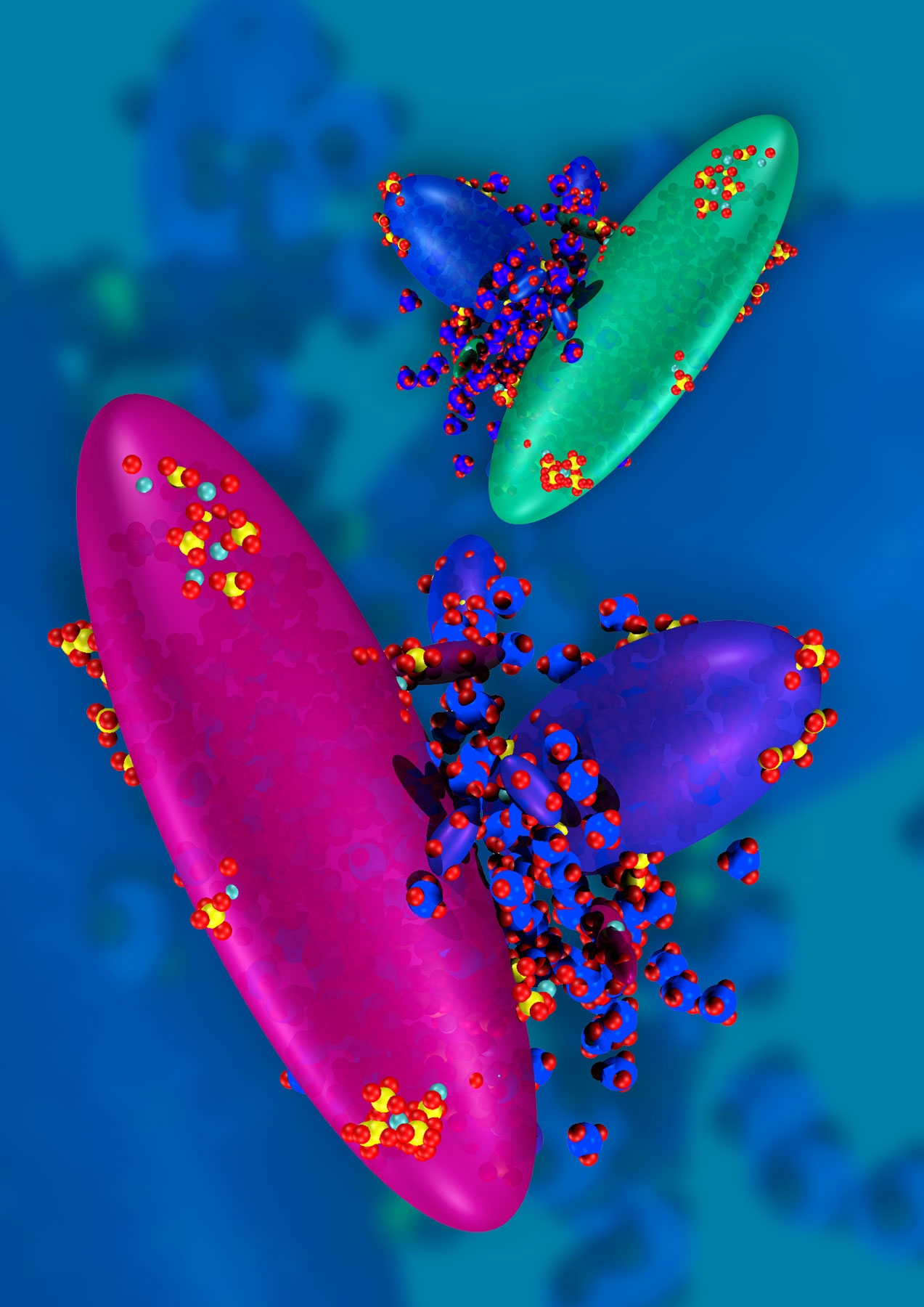Modern techniques of data analysis and machine learning open up new possibilities to use generated data for accelerated material development and process optimization – by means of experiment and simulation. Two application fields are the development of new materials with improved properties and the optimization of processes.
New field of data-driven research and development
Besides theory, experiment and measurement – computational sciences have established themselves as a new field in research and development over the last decades. The large amount of newly-generated data from experiments and simulations together with new techniques of data analysis and the use of high-performance computers have opened the new promising field of data-driven research and development.
Fraunhofer SCAI develops and implements various methods of machine learning and data analysis in different areas of material sciences and chemistry. In particular, SCAI pursues a data-driven approach to virtual material design. For this purpose, methods of high-dimensional optimization, machine learning, data analysis, and multi-scale simulation are suitably combined. This approach is also the basis for the development of simulation-based decision support systems. Applications
An important application is the use of modern data analysis and machine learning to develop efficient models for predicting the properties and performance of materials. These models can be used by means of high-dimensional optimization for the efficient design of materials, molecules or processes.
In particular, SCAI develops similarity measures and kernels which are appropriate for the analysis of the chemical and materials space and uses feature extraction and dimensionality reduction techniques to extract and develop simple models for underlying complex physical processes – examples are found in the projects
- ATOMMODEL (atomic-scale modeling of novel metal-oxides in electronics) Development of machine learning based interatomic potentials and efficient models for predicting materials and molecular properties
- MultiModel (multi-scale simulations software for modeling of growth and diffusion in materials systems) Development and application of efficient similarity measures and kernels for graphs and atomic environments
- SchmiRMal (molecular modeling and simulation of ionic liquids, octanol / water and membrane / water partition coefficients) Estimation of the toxicity of chemicals by means of machine learning and data analysis
- Human Brain Project (integration methods for multi-simulator multi-scale simulations) Machine learning based surrogate models for spiking neural network models
Altogether, innovative data-driven virtual design approaches open the possibility to substantially reduce costs to develop new technologies.
